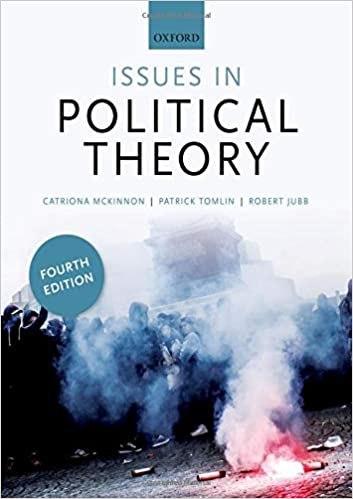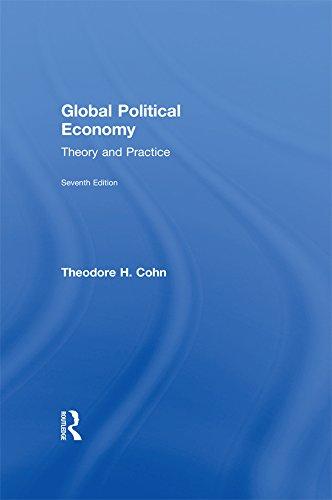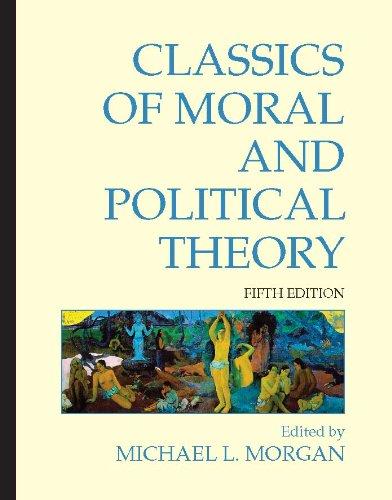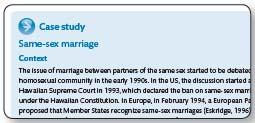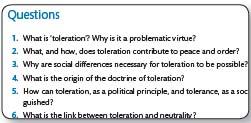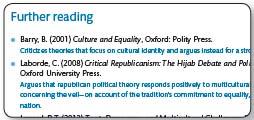Detailedcontents
Listofcasestudies
Notes onthecontributors
How tousethis book
How tousetheonlineresources
Introduction
1 Political obligation
Introduction
Consent
Fairness
Community
Morality
Philosophical anarchism
Conclusion
2 Liberty
Introduction
Rival interpretations of liberty
Republican liberty
Liberty and equality
The value of negative liberty
Conclusion
3 Crime and punishment
Introduction
Consequentialist justifications of punishment
Retributivist justifications of punishment
Mixed approaches to the justification of punishment
Conclusion: punishment and beyond
4 Democracy
Introduction
Instrumentalism
Does democracy have non-instrumental value?
The problem of democratic citizenship
Democratic institutions
Conclusion
5 Power
Introduction
The concept of power and modes of power
Three dimensions of power
An alternative view of power
Power, freedom, and responsibility
Conclusion
6 Equality and social justice
Introduction: the history of social justice
The political rejection of social justice and its revival
Equality
Equality of opportunity
Social justice and social relations
The capability approach
Conclusion: prospects for achieving social justice
7 Toleration
Introduction
The traditional doctrine of toleration
The moral analysis of toleration
The contemporary liberal theory of toleration
Toleration as recognition
Conclusion
8 Multiculturalism
Introduction
Multiculturalism: thick or thin?
Liberalism and cultural rights
Do cultural rights oppress the oppressed?
The politics of recognition
Multiculturalism: open-minded dialogue and a common culture
Conclusion
9 Gender
Introduction
What is feminism?
The sex/gender distinction
Feminism, liberalism, and the law
‘The personal is political’
The ethics of care
Sex and violence
Conclusion
10 Global Poverty
The problem
Global political theory
The duty to aid
Uncertainty and ‘Why me?’
No duty of justice?
The duty not to harm
So, what can and should an individual do?
Conclusion
11 Human Rights
Introduction
Natural rights, the rights of man, and human rights
Analytical issues
Justifying theories
Implementing human rights
Conclusion
12 Sovereignty and Borders
Introduction
Sovereignty
Less or more sovereignty?
Who is sovereign?
Borders
The relationship between sovereignty and borders
Conclusion
13 War and Intervention
Introduction
The just war tradition
Theoretical approaches to the ethics of war
Jus ad bellum
Jus in bello
Jus post bellum
Conclusion
14 The Environment
Introduction
The environment and its relationship to humanity
Justice, value, and the environment
Responsibilities to the future
Policies to protect the environment
Who makes the decisions? Democracy and governance
Conclusion
Glossary
References
Index
andnumerousarticlesandchaptersonfeminist andliberal political philosophy.
ThomasChristiano isProfessor of PhilosophyandLawat theUniversityof Arizona.Hehasbeenafellowat thePrincetonUniversityCenter for HumanValues,theNational HumanitiesCenter,All SoulsCollege,and AustralianNational University.Heistheauthor of TheRuleof the Many(Westview,1996) andTheConstitutionof Equality(Oxford UniversityPress,2008) andarticlesonmoral andpolitical philosophy. Heiseditor of Politics,PhilosophyandEconomics(Sage).Hiscurrent researchisonglobal justiceandinternational institutions,human rights,fair exchange,democracy,andthefoundationsof equality.
SarahFine isaSenior Lecturer inPhilosophyat King’sCollegeLondon.She isco-editor (withLeaYpi) of Migration in Political Theory: The Ethics of Movement and Membership (OxfordUniversityPress,2016).Much of her researchfocusesonissuesrelatedtomigrationandcitizenship.
HelenFrowe isWallenbergAcademyResearchFellowinPhilosophyat Stockholm University,whereshedirectstheStockholm Centrefor the Ethicsof War andPeace.Sheistheauthor of TheEthicsof War and Peace: AnIntroduction(Routledge,2011) andDefensiveKilling: An EssayonWar andSelf-Defence(OxfordUniversityPress,2014).
AnnaElisabettaGaleotti isFull Professor of Political Philosophyat the Universitàdel PiemonteOrientale.Shehasspent several yearsasa researchfellowinvariousinstitutionsabroad,includingCambridge University,theEuropeanUniversityInstituteinFlorence,theInstitute for AdvancedStudyinPrinceton,theCentrefor EthicsandPublic Affairsof St AndrewsUniversity,andtheSafraFoundationCenter for Ethicsof HarvardUniversity.Shehasworkedontolerationfor many years,andhaspublishedthreebooksandmanyessays,including TolerationasRecognition(CambridgeUniversityPress,2002) and ‘Femalecircumcision’ (Constellations,14,2007).Sheiscurrently writingabookonself-deceptionanddemocraticpolitics.
KeithHyams isaReader inPolitical TheoryandInterdisciplinaryEthicsat theUniversityof Warwick.Hehasheldvisitingpositionsat the
MassimoRenzo isProfessor of Politics,Philosophy& Lawat King’sCollege London.Hehasheldvisitingappointmentsat theAustralianNational University,theuniversitiesof VirginiaandArizona,theMurphy Institute,theNational Universityof SingaporeandtheNathanson Centrefor Transnational HumanRights,Crime& Security.Heisan affiliatedresearcher at theStockholm Centrefor theEthicsof War & PeaceandtheHonorarySecretaryof theSocietyfor Applied Philosophy.
ZofiaStemplowska isAssociateProfessor of Political Theoryat the Universityof OxfordandAsaBriggsFellowof Worcester College, Oxford.ShewaspreviouslyAssociateProfessor of Political Theoryat theUniversityof Warwick.Shewritesondomesticandglobal justice andmitigationof historical injustice.
PatrickTomlin isReader inPhilosophyat theUniversityof Warwick.
JonathanWolff istheBlavatnikChair inPublicPolicy,at theBlavatnik School of Government,Oxford.HisbooksincludeAnIntroductionto Political Philosophy(OxfordUniversityPress,1996; 2006; 2016), Disadvantage(withAvner de-Shalit; OxfordUniversityPress,2007), EthicsandPublicPolicy: APhilosophical Inquiry(Routledge,2011), TheHumanRight toHealth(Norton,2012) andAnIntroductionto Moral Philosophy(Norton2018).
Develop your ability to connect theory with the real world with an extended case study at the end of each chapter.
Questions
Assess your understanding of core themes and reflect critically on key ideas with carefully devised end of chapter questions.
Further Reading
Broaden your learning with guided further reading, where the authors highlight additional resources you may wish to read, with explanations of why these readings are helpful.
Web Links
At the very end of the chapters, you will find an annotated list of important websites which will help you take your learning further and
FlashcardGlossary: Revise key terms and concepts from the text with a digital flashcard glossary.
For registered lecturers:
Seminar Activities and Essay Questions: Reinforce key themes from each chapter with suggested seminar activities and essay questions.
State institutions provide the basic framework within which people live. These institutions set the terms of social interaction. A further function of these institutions is to divide up the benefits and burdens of society. What division of social goods do principles of social justice demand? How should social and political institutions treat their members in order to realize equality between them (Chapter 6)? In particular, how should equality be achieved within societies comprised of diverse groups? To what extent should social and cultural groups tolerate one another, or is it important for citizens to recognize and value each other’s differences (Chapter 7)? In a multicultural society, should citizens all have the same set of legal rights and duties, or should some citizens be exempt from some laws on the basis of group membership (Chapter 8)? Societies have traditionally divided their membership into two sexes and genders, assigning members particular social roles in, for example, the family based on that division. What is the relationship between sex and gender? What does gender equality look like, and can it be achieved through legislation alone (Chapter 9)?
Beyond what goes on within states are a set of questions about relationships between states and between citizens of different states. In a world in which very many people live in extreme poverty, what do wealthy individuals and wealthy societies owe to them? Is lifting the global poor out of poverty best understood as a duty to aid or as a duty to stop harming them through exploitative and exclusionary global institutions (Chapter 10)? Are there minimum standards—perhaps related to human rights—which morally bind all states and their citizens, regardless of their differences (Chapter 10)? If so, how do they negotiate the tension between universal standards and the importance of respecting cultural diversity (Chapter 11)? To what extent can a country which fails to protect human rights resist outside interference? Can it claim that it has sovereignty and thus that outside forces have no right to intervene? What rights do individuals have to cross borders, and what are the limits of states’ rights to control who enters and exits their territory (Chapter 12)? What violations of, or threats to,
sovereignty justify the resort to war, and so to mass political violence, and can war be waged in order to protect citizens against their own sovereign state? What principles should govern the resort to war and the conduct of soldiers within it (Chapter 13)? Some issues like the environment and the threat of climate change affect all states, although not in the same way. Who is morally responsible for climate change, and how should this be reflected in international climate agreements and policies? Should more developed countries cut their emissions to enable developing countries to emit more, so that individuals in developing countries can enjoy the benefits of industrialization already enjoyed by citizens of more developed states? In the face of the current climate crisis, what do we owe to future people (Chapter 14)?
Plan of the book
The chapters of the book are loosely grouped to reflect the two groups of questions outlined above.
Chapters 1–9 discuss issues that most clearly arise within domestic politics. They cover political authority and obligation, liberty, crime and punishment, democracy, power, equality and social justice, toleration, multiculturalism, and gender
Chapters 10–14 cover issues relating to the relations between states. They explore global justice, human rights, sovereignty and borders, war and intervention, and environment and climate change.
The topics of the chapters in this book have been chosen to reflect key sites of activity in the discipline of normative political theory, as it stands today—in particular, with an eye to the most important, visible, and influential strands in political theory over the last fifteen years. The book has also been written specifically bearing in mind the practical nature of political theory, the way in which normative
Questions about the status of normative moral and political claims, such as whether or not such statements can be true, are dealt with in a branch of philosophy called meta-ethics. We cannot hope to do justice to the complexity of those debates here. What matters for our purposes is whether the worries articulated above make it impossible or mistaken to engage in reasoned argument about how we ought to live together. First, we think that many of the worries that students have about theorizing about how we ought to live together in fact commit them to claims about how we ought to live together. For instance, a claim that individuals can choose how to live as they please seems to imply that other individuals and political institutions ought to treat them in a particular way; it seems to imply permissiveness or toleration. In a similar vein, cultural relativism often appears to be driven by a commitment to group self-determination—one society shouldn’t tell another how to live but this of course is itself a universal norm about how societies should treat each other.
Second, and more importantly, whether one believes in universal values, or is a relativist or a subjectivist, we still have to make political decisions within our societies. Normative questions cannot be avoided given that we must decide how to live together. For example, governments must have a policy on whether or not to allow abortion. They cannot simply say ‘it’s all a matter of opinion’ and do nothing, because they must decide one way or the other. In arguing over what policy we should adopt, it doesn’t matter whether we take ourselves to be articulating universally valid moral standards, the best interpretation of local values, or our own subjective viewpoint—we can still explain and attempt to justify to others the position we take. Even if you think that it’s up to individuals to choose their own moral perspective, you can still try to persuade them to choose in one way or another. Equally, if you think that each culture has its own distinctive set of norms and values, you can offer interpretations of those norms and values which show that one policy is a better expression of them than another.

